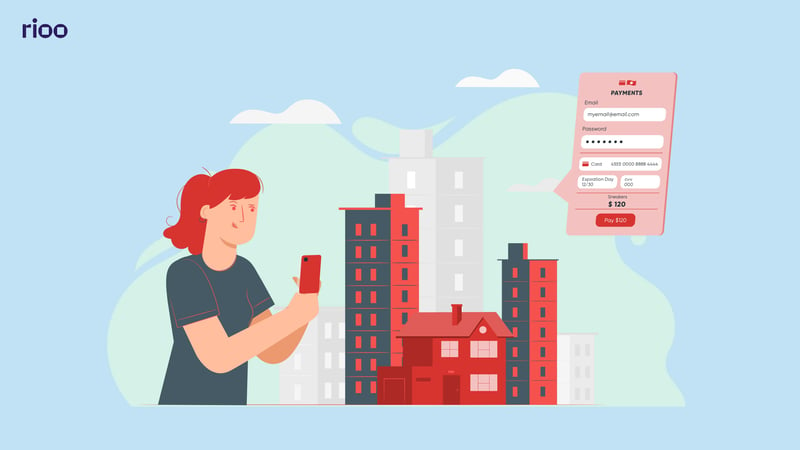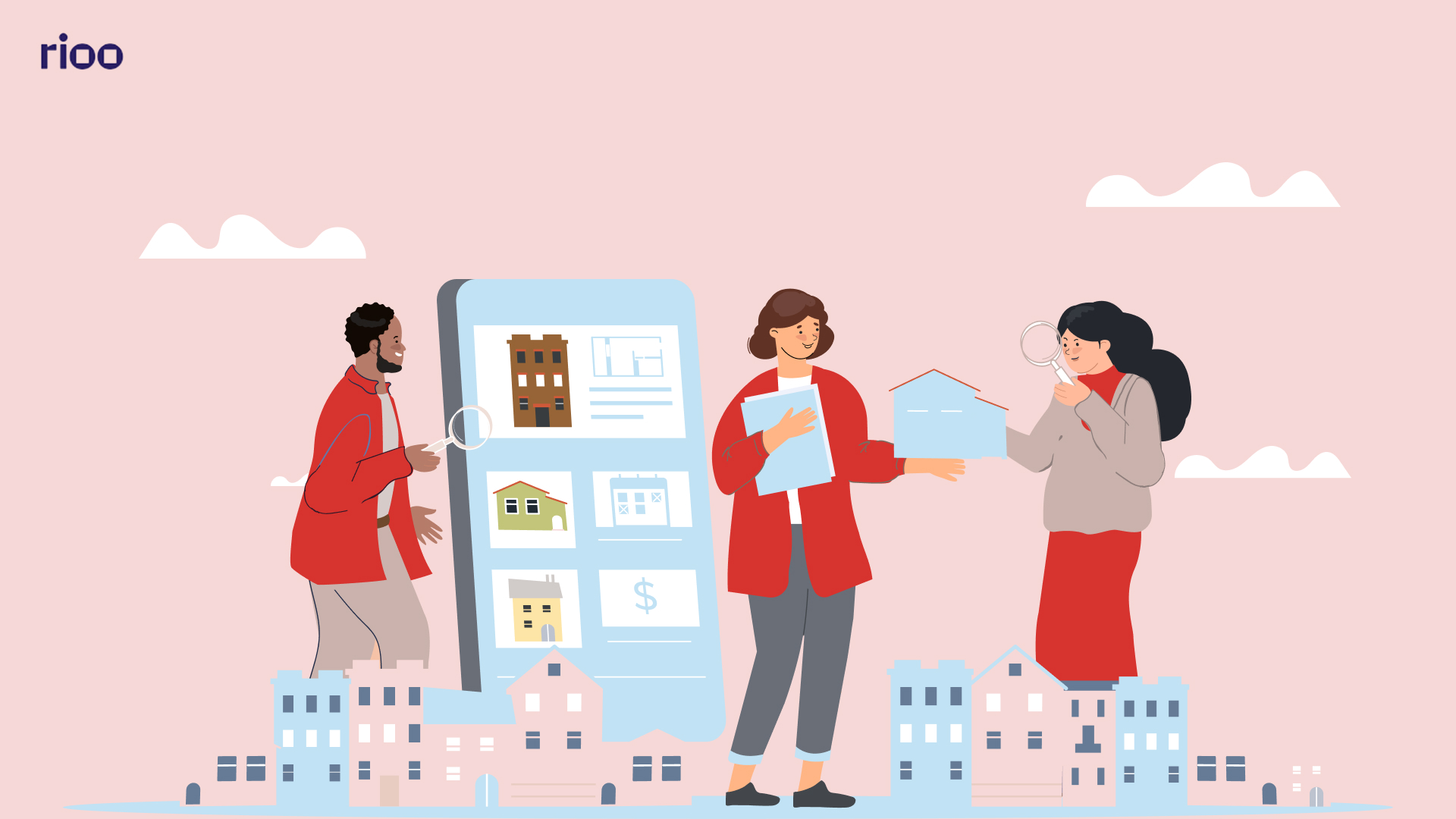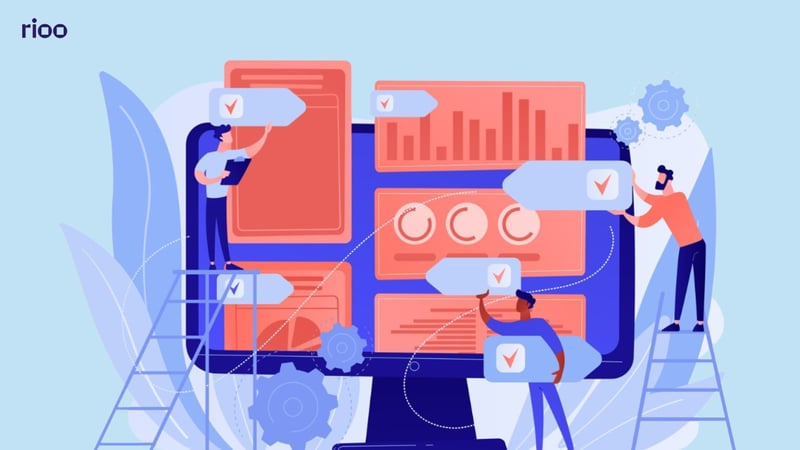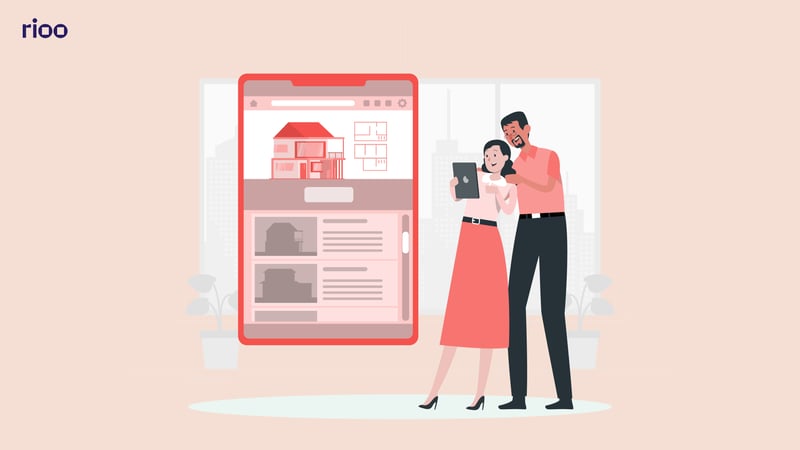Many property managers overseeing numerous units find maintaining efficiency challenging. Rising costs, evolving tenant expectations, and complex portfolios make it harder to maintain control with outdated systems.
Globally, property management software is on the fast track. The market estimated at US $3.2 billion in 2023 is projected to expand to US $7.8 billion by 2033, growing at almost 9 percent annually. This reflects strong confidence in digital-first solutions.
For property managers, leasing teams, and financial administrators, this isn't just a number. It's proof that businesses worldwide are already shifting to smarter systems to cut manual work, improve tenant experiences, and scale without friction.
Key Takeaways
- Manual payment processes create inefficiencies and risk – Delays, errors, limited transparency, and high administrative burdens can hinder cash flow and tenant satisfaction.
- Digital payment solutions streamline operations – Automation, real-time tracking, and flexible payment options save time, reduce mistakes, and improve financial accuracy.
- Essential features for property payment platforms – Look for simplified rent collection, automated bill and vendor payments, multiple payment channels, and integrated reporting for transparency.
- A structured payment process enhances efficiency – From secure data capture to authorization, reconciliation, and reporting, a repeatable workflow ensures smooth financial operations and compliance.
What Is a Property Management Payment Solution?
A property management payment solution is a digital platform designed to streamline rent collection, fee processing, and financial reporting for residential and commercial properties. These systems replace manual methods such as checks, bank transfers, or in-person payments with secure, automated options like online banking, credit or debit cards, ACH transfers, and digital wallets.
For property managers, a payment solution helps:
- Ensure timely collections through automated reminders and scheduled payments.
- Maintain accuracy with real-time transaction tracking and reduce reconciliation errors.
- Save administrative time by minimizing manual paperwork and data entry.
- Enhance tenant convenience by offering multiple, flexible payment methods.
By digitizing financial workflows, property management payment solutions not only simplify day-to-day operations but also support better cash flow visibility and long-term portfolio stability.
While property management payment solutions aim to simplify and streamline financial transactions, many property managers still rely on manual processes, bringing their own set of challenges.
The Challenges of Manual Payment Management
Managing property payments through manual methods such as cash, cheques, or spreadsheets can be both time-consuming and prone to errors. While these traditional practices may seem manageable at a small scale, they create significant challenges as the number of tenants or properties increases.
Here are some of the key issues:
- Delayed Collections: Manual payments often depend on in-person visits or cheque clearances, leading to delays in receiving rent. This affects cash flow and makes it difficult for property owners to plan finances effectively.
- Risk of Errors: Recording payments manually increases the chances of mistakes, such as duplicate entries, missed records, or incorrect amounts, which can create disputes between tenants and managers.
- Limited Transparency: Without a centralized system, it's difficult for tenants to confirm whether their payments have been received and for managers to track the overall financial health of properties.
- High Administrative Burden: Chasing late payments, maintaining physical records, and reconciling accounts take up considerable time and resources that could otherwise be spent on property upkeep or tenant engagement.
- Security Concerns: Handling large amounts of cash or storing sensitive tenant information manually increases the risk of loss, theft, or data breaches.
Now that we've identified where manual payment handling falls short, let's look at how a dedicated payment solution can address them effectively.
Purpose of a Property Management Payment Solution
A property management payment solution isn't just about collecting rent; it's about creating a streamlined financial ecosystem for both tenants and property managers. Its purpose is to ensure that payment processes are secure, efficient, and transparent, while reducing the operational load on management teams.
Here's what a strong payment solution is designed to achieve:
1. Ensure Hassle-Free Payments
Tenants expect flexible options; whether that's online banking, card payments, or digital wallets. A payment solution simplifies these transactions, making it easier for tenants to stay on time with their dues.
2. Improve Financial Accuracy
Automated records eliminate manual errors, ensuring every transaction is tracked and reconciled. This accuracy builds trust with tenants and helps managers maintain reliable financial reporting.
3. Save Time Through Automation
Recurring rent collections, late fee reminders, and payment confirmations can all be automated. This reduces repetitive manual work and allows property managers to focus on higher-value tasks.
4. Strengthen Transparency and Control
Both tenants and managers benefit from clear, real-time visibility of payments. Tenants know their payments are received, while managers can track performance at the unit, property, or portfolio level.
5. Support Long-Term Cash Flow Stability
By standardizing collections and reducing delays, payment solutions help property owners and management firms maintain steady cash flow, a critical factor for operational planning and portfolio growth.
By combining convenience for tenants with automation, accuracy, and real-time visibility for managers, a property management payment solution creates a reliable financial framework that supports smooth operations, reduces administrative strain, and promotes long-term portfolio stability.
With the purpose in mind, it becomes easier to identify the essential features that ensure smooth payment processing.
Key Features to Look for in Property Management Payment Software
A good property management payment solution is more than just a tool for collecting rent. The right platform acts as a financial hub, simplifying how you handle money coming in from tenants and money going out to vendors, service providers, and utility companies. By centralizing these tasks, you reduce paperwork, save time, and gain a clear overview of property finances.
1. Simplified Rent Collection
For landlords and managers, rent collection is often the most frequent task. Modern software makes this process seamless with digital payment options such as bank transfers (ACH), credit cards, debit cards, and even wallet-based systems. Many platforms also allow tenants to set up recurring payments, reducing the risk of late rent while giving them more flexibility in how they pay.
2. Automated Bill Payments
Managing expenses like maintenance fees, utilities, and service invoices can quickly get overwhelming. Advanced payment systems include features for scheduling and paying these bills directly. Instead of writing checks or handling multiple portals, everything can be managed in one place. Some solutions also allow electronic transfers or generate physical checks when needed.
3. Vendor and Contractor Payouts
Property operations often depend on third-party contractors for repairs, landscaping, or cleaning. Timely payments to these vendors help build strong working relationships and ensure services are delivered without delays. With the right software, you can log vendor invoices, track balances, and release payments digitally, whether through bank transfers or other supported methods.
4. Multiple Payment Options
Flexibility benefits both tenants and property managers. A strong payment platform supports various incoming and outgoing methods, from ACH transfers and card payments to wire transfers and check processing. This variety ensures tenants can pay conveniently while managers can settle expenses without hassle.
Once you know what features to prioritise, the next step is to see how payment processing actually works in practice; here’s a step-by-step look at the process.
How Property Management Payment Processing Works?
Property management payment systems handle each rent or fee transaction through a structured process. Below is a step-by-step look at how payments move from the tenant to the property manager's account.
Step 1: Payment initiation: The tenant starts the payment using an online portal, mobile app, card terminal, bank transfer page, or digital wallet.
Step 2: Secure data capture: The system encrypts and replaces payment details with unique tokens (tokenisation) to protect sensitive information from unauthorized access.
Step 3: Gateway routing: The request is sent through a payment gateway, which securely transmits payment data to the processor or acquiring bank responsible for authorizing the transaction.
- Card payments flow through card networks to the issuing bank.
- Bank transfers (ACH/NEFT) move through banking rails.
- Wallets follow their own network pathways.
Step 4: Authorization: The issuing bank checks account status, available funds, and fraud risks before approving or declining the transaction within seconds.
Step 5: Instant confirmation: The tenant receives a success/decline message. Receipts and notifications are generated, and records are automatically logged for the property manager.
Step 6: Clearing and settlement: Approved transactions are forwarded to the property manager's merchant account. Settlement typically happens within 1–3 business days, depending on payment method and processor.
Step 7: Auto-posting & reconciliation: The system automatically matches payments to the correct lease or unit, calculates any applicable late fees or partial payments, and updates the accounting records to ensure financial accuracy.
Step 8: Disbursement: Funds are transferred to the appropriate accounts, such as operating, trust, or owner accounts, based on pre-set rules.
Step 9: Reporting & audit trail: The system generates real-time dashboards and reports for collections, deposits, and charge types, supporting monthly close and tax reporting.
Step 10: Exception handling: If issues occur like declines, chargebacks, or returns, the system triggers alerts, retries payments, and maintains dispute documentation.
Step 11: Security & compliance: End-to-end encryption, tokenisation, role-based access, and audit logs help ensure compliance with standards like PCI DSS.
While the process itself seems straightforward, property managers often run into practical roadblocks that make payment handling more complicated. Let's look at some of the most common challenges.
Common Hurdles in Property Payment Processing
Digital tools have made collecting and managing payments far more efficient, but property managers still face challenges that can slow operations or strain relationships. Being aware of these obstacles and planning solutions helps minimize disruption.
1. Late or Delayed Payments
Cash flow can quickly become unstable when tenants miss deadlines or payments take days to clear. This delay impacts a manager's ability to cover mortgages, payroll, and maintenance expenses on time. Faster digital payment methods, such as ACH transfers or card-based payments, can reduce these bottlenecks.
2. Errors and Discrepancies
Mismatched amounts, incorrect details, or partial payments often result in reconciliation headaches. These errors not only cost time to resolve but may also create friction with tenants. Automated reconciliation and real-time validation can help close the gap.
3. Data Security Risks
Handling sensitive financial information means being a target for fraud or cyber threats. Without strong encryption, compliance protocols, and system updates, managers run the risk of breaches. Modern platforms often include built-in protections to reduce these vulnerabilities.
4. Processing Costs
Transaction fees can quietly erode profits, especially for managers overseeing large portfolios. Exploring low-cost channels like ACH, negotiating volume discounts, or applying convenience fees (where regulations allow) can help contain costs.
5. System Integration Gaps
If payment software doesn't communicate well with existing property management systems, managers may face duplicated work and inaccurate reporting. Choosing platforms with proven integration capabilities ensures smoother operations.
6. Limited Payment Options
Tenants today expect flexibility in how they pay, from cards to digital wallets. Limiting choices can slow collections, but offering too many methods can complicate workflows. Striking a balance is essential for efficiency and tenant satisfaction.
7. Manual Workload
Relying heavily on checks and manual processing increases the chance of human error while slowing staff productivity. Automating repeat tasks helps free teams to focus on more valuable activities.
8. Inconsistent Reporting
Different payment types often produce varied levels of transaction data, making it hard to maintain clean financial records. A centralized reporting system ensures consistency across properties and simplifies tax prep.
9. Tenant Communication Gaps
Missed reminders, unclear due dates, or confusion about late fees can lead to frustration. Automated alerts, digital portals, and self-service tools improve transparency and reduce back-and-forth.
While these hurdles can disrupt daily operations, adopting the right strategies can make payment management more efficient and tenant-friendly. Let's look at some practical ways to simplify the process.
Strategies for Smoother Property Payment Processing
Efficient payment handling doesn't just streamline finances; it also builds stronger tenant relationships and reduces operational headaches. By adopting the following strategies, property managers can set up a secure, reliable, and tenant-friendly payment environment.
1. Provide Flexible Payment Choices
Today's renters expect options. Offering multiple payment channels, digital wallets, ACH transfers, credit/debit cards, or even limited offline methods, ensures inclusivity and boosts on-time collections. The goal is to balance tenant convenience with operational efficiency.
2. Automate Invoicing and Reminders
Manual reminders take up valuable staff time. Automated billing systems send timely notices for upcoming rent, confirmations after successful payments, and alerts when issues arise. This consistency helps tenants stay on track and allows managers to predict cash flow more accurately.
3. Establish Clear Payment Guidelines
Transparency eliminates confusion. Property managers should publish straightforward policies that explain accepted payment methods, due dates, late fees, and any grace periods. Making these easily available, through portals, leases, or welcome kits, reduces disputes and protects both parties.
4. Strengthen Security Measures
Financial data demands strong protection. Encrypted gateways, multi-factor authentication, frequent system updates, and strict access controls help secure transactions. Training both staff and tenants on safe payment practices further reinforces trust and reliability.
5. Build Reliable Support Systems
Even the best payment platforms occasionally hit snags. Having a trained support team ready to troubleshoot quickly, via phone, email, or tenant apps, ensures problems are resolved before they escalate, improving tenant satisfaction and loyalty.
6. Monitor and Optimize Transaction Costs
Payment processing fees add up. Regularly reviewing rates, negotiating with providers, and exploring lower-cost options like ACH transfers help property managers safeguard margins. Incentives, such as discounts for early payments, can also encourage cost-efficient methods.
7. Guide Tenants with Resources
Not every tenant is tech-savvy. Easy-to-follow payment guides, covering step-by-step instructions, FAQs, and security assurances, can help reduce mistakes and cut down on support tickets. Keeping these resources updated shows professionalism and care.
8. Keep Communication Ongoing
Beyond due dates, property managers should keep tenants updated on any system changes, new features, or policy adjustments. Communication should be two-way, with tenants able to share feedback or request new payment options, making the system more adaptive over time.
By implementing these strategies, property managers can create a payment process that is not only efficient and secure but also enhances tenant trust, reduces administrative burdens, and ensures a smoother, more predictable financial workflow across their entire portfolio.
After exploring the strategies for seamless payment processing, it’s time to see how RIOO can simplify and streamline property payment management.
Why Choose RIOO for Property Payment Management?
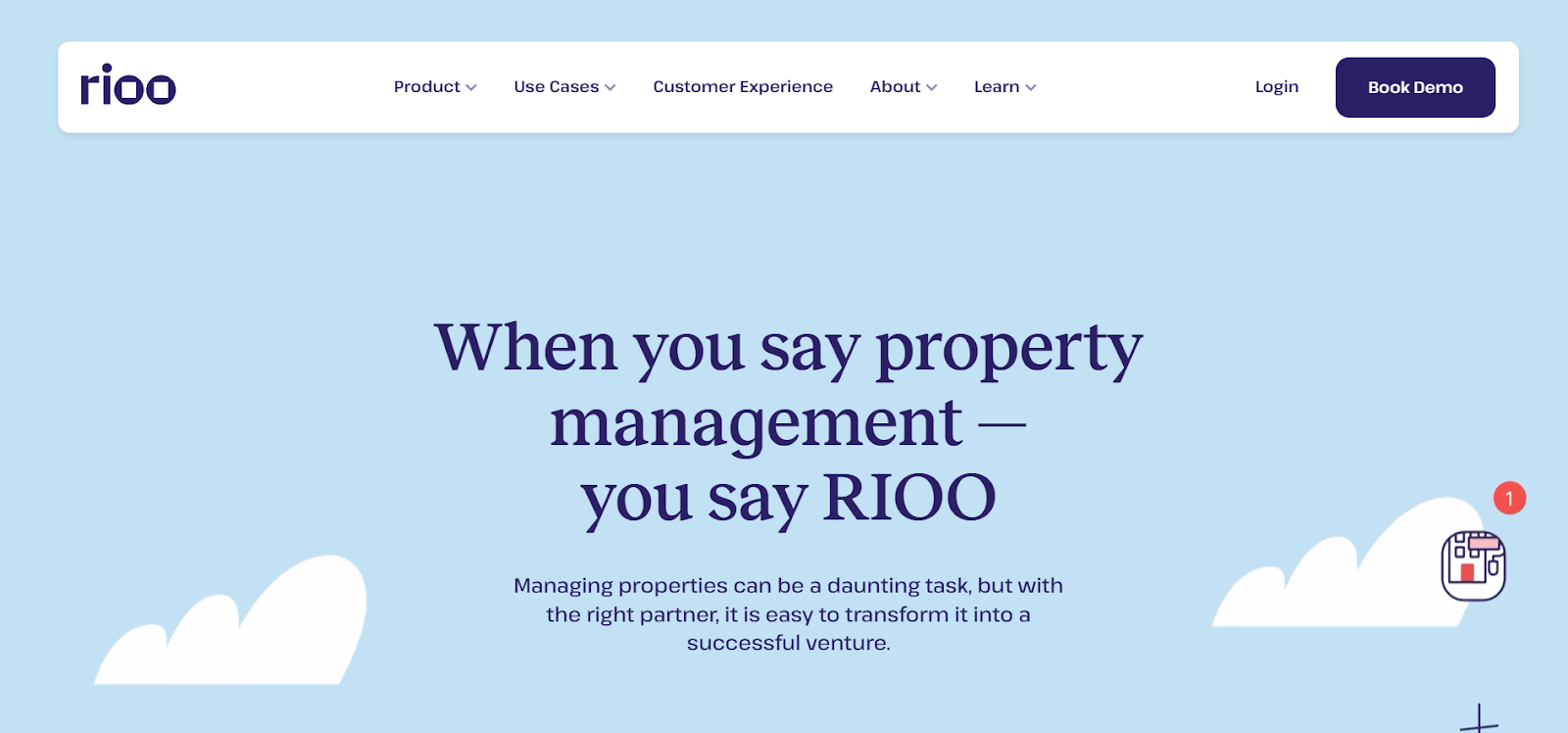
Property managers need more than just a payment gateway; they need a reliable solution that simplifies collections, automates records, and ensures both tenants and landlords have a smooth experience. This is where RIOO stands out.
Key features:
- Property Accounting – Keep your finances accurate and simple with centralized accounting tools tailored for property managers.
- Income & Expense Management – Gain clear visibility into cash flow and track every transaction for unparalleled financial clarity.
- Unified Portfolio Management – Whether you manage student housing, HOAs, multi-floor offices, or retail spaces, RIOO adapts to both residential and commercial portfolios, bringing all financial workflows into one platform.
- Vendor Management & Accounts Payable – Get automated payment reminders and keep track of upcoming vendor invoices, helping your team proactively manage payment deadlines and reduce manual follow-ups.
- Financial & Operational Expenses – Monitor both financial and day-to-day operational costs, making your budget work smarter for your portfolio.
- Seamless Integrations – RIOO connects smoothly with property management systems, accounting platforms, and ERP tools. This means less manual entry, fewer errors, and faster decision-making.
By combining accurate accounting, automated expense tracking, and seamless vendor payments in one place, RIOO ensures that property managers don’t just process transactions but gain a smarter, more transparent way to manage their entire financial ecosystem with confidence and efficiency.
Don’t let manual processes slow you down. Schedule a demo today and discover how your team can work more efficiently, reduce late payments, and stay ahead of financial challenges.
Conclusion
Review your current property payment workflows. How much time is lost in reconciling accounts, handling late payments, or resolving tenant disputes? If the answer runs into hours each week, it's a clear signal that manual methods are holding your operations back.
For property managers handling multiple properties and tenants, fragmented systems create blind spots in financial visibility. What's needed is a payment solution that integrates seamlessly with accounting while offering real-time insights and automated tracking.
This is where RIOO steps in. Designed to simplify property payment management, it centralizes collections, reduces errors, and ensures complete transparency across your portfolio. By combining automation with accuracy, RIOO helps property managers focus less on payment bottlenecks and more on delivering better tenant experiences.
Schedule a demo and watch how RIOO simplifies property payment workflows with real-time efficiency.
FAQs
Q. What is property management payment processing?
A. It refers to the system or method used by property managers to collect rent, maintenance fees, or other property-related payments from tenants and vendors. Modern solutions automate billing, reminders, and reconciliations.
Q. Why is manual payment management a problem for property managers?
A. Manual processes often lead to errors, delays, missed payments, and poor record-keeping. They also consume extra time that could be spent on managing properties or tenant relationships.
Q. What features should I look for in property management payment software?
A. Essential features include automated invoicing, secure online payment options, tenant portals, real-time reporting, and integration with accounting systems.
Q. How can property managers overcome common payment challenges?
A. By switching to digital solutions that automate collections, provide multiple payment options, and reduce reliance on paper checks or manual tracking.
Q. How does RIOO help with property payment processing?
A. RIOO simplifies collections, automates reminders, and ensures accurate record-keeping while integrating with existing financial systems. It reduces the workload for managers and improves the payment experience for tenants.












